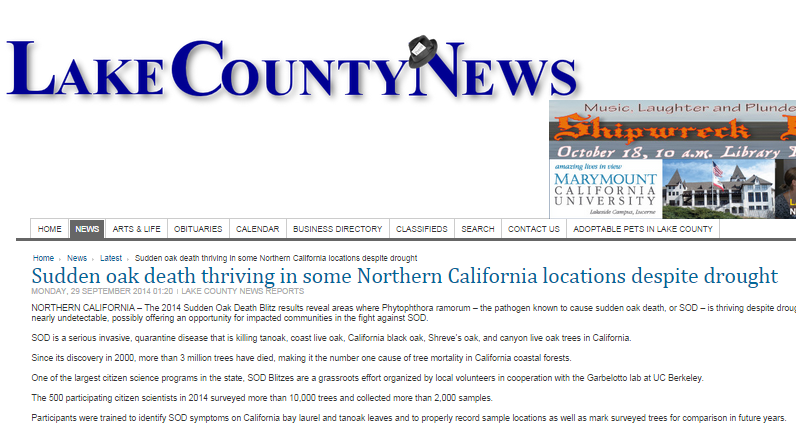A recent report in Lake County News sadly confirms that Sudden Oak Death (SOD), which first reached nearly epidemic levels in the state in 2011, continues to plague many parts of California, particularly places near bodies of water like the Bay Area.
“The 2014 Sudden Oak Death Blitz results reveal areas where Phytophthora ramorum – the pathogen known to cause sudden oak death, or SOD – is thriving despite drought conditions and areas where infection levels are nearly undetectable, possibly offering an opportunity for impacted communities in the fight against SOD.”
SOD Blitz is a community effort where local volunteers scout various locations for signs of SOD, and gather samples for testing by the Garbelotto Lab at UC Berkeley.
There has been no known solution against SOD, but the experts behind the SOD Blitzes advise homeowners to be on alert for signs of the disease, and to immediately have samples tested for proper diagnosis. If SOD is present, management practices, including those listed below, need to be done to stop the infection from spreading.
Infected Oaks
The University of California Statewide Integrated Pest Management Program (UCIPM) says it is not always necessary to remove oak trees infected by SOD, as one can still survive for a number of years even with the infestation. However, if the infected tree poses a hazard to life, as well as to the health of surrounding trees, removal may be necessary.

The UCIPM suggests consulting a certified arborist to determine if an infected tree poses any hazard; and if felling is necessary, it should be done by tree service professionals for safety purposes.
Bay Area locals can call on Palo Alto tree care experts, such as Bay Area Tree Specialists, which have certified arborists who can present homeowners with the right options, as well as skilled technicians who can safely remove hazardous trees using the right tools and equipment.
Removing Bay Laurels
The organism causing SOD is carried by ornamental plants like Rhododendrons and Camellias, but in California, mostly by the leaves of Bay Laurel trees and shrubs. When tanoaks get infected, they can spread the infection as well.
One of the management practices recommended by the UC Berkeley Forest Pathology and Mycology Lab is to remove small and medium bay laurel plants within 10 yards of an oak, and to prune large bay leaf branches in trees. The latter may be safely done by experts in tree pruning in San Jose.
Preventive treatment using phosphonate can also protect oaks from SOD. To ensure the proper application of the treatment, homeowners should call in tree care specialists who have the right training and protective gears to do the job safely and properly.
(Source: Sudden oak death thriving in some Northern California locations despite drought, Lake County News Reports, September 29, 2014)

